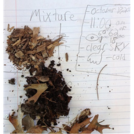
Students will recognize that mixtures are made when two or more materials from the garden are mixed together and the physical properties do not change.
- Subject:
- Physical Science
- Material Type:
- Lesson Plan
- Author:
- Out Teach
- Date Added:
- 07/22/2021

Students will recognize that mixtures are made when two or more materials from the garden are mixed together and the physical properties do not change.
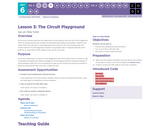
In this lesson students get their first opportunity to write programs that use the Circuit Playground. After first inspecting the board visually and hypothesizing possibly functionalities, students move online where they will learn to write applications that control an LED. By combining App Lab screens with the Circuit Playgrounds, students can gradually start to integrate elements of the board as an ouput device while relying on App Lab for user input.
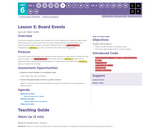
This lesson transitions students from consider the Circuit Playground as strictly an output device towards using it as a tool for both input and output. Starting with the hardware buttons and switch,sing the hardware buttons and switch, students learn to use `onBoardEvent()`, analogously to `onEvent()`, in order to take input from their Circuit Playgrounds.

This presentation talks about how it’s important to propagate the message that physical exercise has other health benefits effect than weight reduction and even if the body weight isn’t reduced by physical exercise, the body composition might change. Furthermore we’ll talk about the metabolic syndrome.
Course responsible: Associate Professor Signe Sørensen Torekov, MD Nicolai Wewer Albrechtsen & Professor Jens Juul Holst
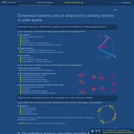
Why do quantitative biologists sometimes claim that mRNA copy numbers are Poisson distributed in simple models of gene transcription? The first video segment addresses this question under the simplifying assumption that mRNA degradation occurs after a well-defined, deterministic lifetime, and the second segment illustrates the same basic concept for the more realistic situation in which degradation is stochastic.
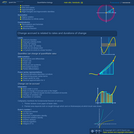
In the first video segment, we introduce Euler's number by considering the problem of interest compounded continuously. After we obtain the power-series representation for exp(x), we explore its properties, in the next four video segments, to convince ourselves that exp(x) is literally an exponential function, meaning a number, approximately 2.71828, taken to the power x. In the final two segments, we present the natural logarithm and demonstrate that it is the anti-derivative of 1/x.
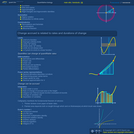
In the five parts of this video, we define the derivative and then build a cribsheet of rules for expressing the slopes of simple functions and combinations of functions. These include the power rule, the chain rule, the product and quotient rules, and the rules for differentiating sinusoidal functions.
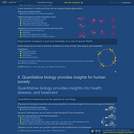
We express the exponential function of an imaginary variable in terms of sine and cosine. The "complex exponentials" that result trace out a circle in the complex plane. Pointing to one of the positions in the complex plane, we obtain the identity exp(i pi) = -1.
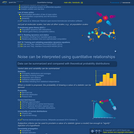
In a toy model of a cell, protein X is produced according to a translation rate coefficient and eliminated according to a degradation rate coefficient. The protein copy number at which the rates for these processes balance is called the steady-state level, and the time it takes for a cell initially containing zero copies of protein X to accumulate half the steady-state level is called the _ŃŇrise time._Ń Surprisingly, the "rise time" depends on the degradation rate coefficient only. The classic textbook presentation of this topic is found in Alon, An Introduction to Systems Biology: Design Principles of Biological Circuits, Boca Raton: Chapman & Hall/CRC, 2007 (p. 18-22).
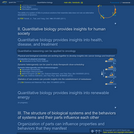
To describe how oscillations are supported in systems of differential equations, we present a classic "Romeo and Juliet" picture of two-dimensional oscillations, and we analyze how trajectories change as nullclines are arranged at different angles in the phase plane. In addition to models based on traditional systems of differential equations, dynamical systems with time delays and dynamical systems with stochastic fluctuation (i.e. stochastic resonance) can also support oscillations.

This template is meant to be a guide for Nebraska Physical Education Teachers when creating digital online lessons. Headings and/or topics not included in the lesson plan should be marked N/A.
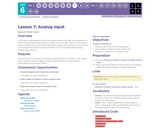
In this lesson, students explore how the three analog sensors (sound, light, and temperature) can be used to write programs that respond to changes in the environment. The use of these sensors marks a transition in terms of how users interact with a program. By using sensors as an input, the user of an app doesn't have to directly interact with it at all, or may interact without actually realizing they are doing so.
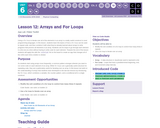
Using a _for loop_ to iterate over all of the elements in an array is a really useful construct in most programming languages. In this lesson, students learn the basics of how a _for loop_ can be used to repeat code, and then combine it with what they've already learned about arrays to write programs that process all elements in an array. Students use for loops to go through each element in a list one at a time without having to write code for each element. Towards the end of the lesson students will apply this with the `colorLed` list on the board to create an app that changes all of the LEDs each time a button is clicked.
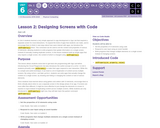
In Unit 4 students learned a very simple approach to app development in App Lab that required a separate screen for most interactions. To expand the kinds of apps that students can make, and to encourage them to think in new ways about how users interact with apps, we introduce the `setProperty()` block. This command can be used to set the content and properties of various UI elements, allowing students to write programs that update information on a single screen, instead of manually creating duplicate screens. In this lesson students build up simple apps that only require a single screen, the content of which is changed using `setProperty()`.
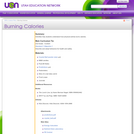
The activities in this lesson help students understand how physical activity burns calories.
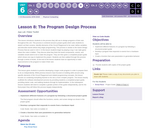
This lesson introduces students to the process they will use to design programs of their own throughout this unit. This process is centered around a project guide which asks students to sketch out their screens, identify elements of the Circuit Playground to be used, define variables, and describe events before they begin programming. This process is similar to the Game Design Process that we used in Unit 3. In this lesson students begin by playing a tug o' war style game where the code is hidden. They discuss what they think the board components, events, and variables would need to be to make the program. They are then given a completed project guide which shows one way to implement the project. Students are then walked through this process through a series of levels. At the end of the lesson students have an opportunity to make improvements to the program to make it their own.
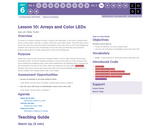
An array is an ordered collection of items, usually of the same type. In this lesson, students learn ways to access either a specific or random value from a list using its index. They then learn how to access the colorLEDs array that controls the behavior of the color LEDs on the Circuit Playground. Students will control the color and intensity of each LED, then use what they have learned to program light patterns to create a light show on their Circuit Playground.
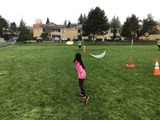
Frisbee Golf can be a great way to implement Outdoor Education into the Physical Education classroom. The activities in this unit from SHAPE Washington are all aligned to meet the state standards as well as provide enjoyment for the students. Lesson adaptations are suggested that incorporate inclusionary activities and meet the needs of students with disabilities.
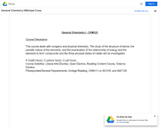
This course deals with inorganic and physical chemistry. The study of the structure of atoms, the periodic nature of the elements, and the examination of the relationship of energy and the elements to form compounds and the three physical states of matter will be investigated.

When a derivative of a function appears on one side of an equation and the function appears somewhere on the other side, it is common to employ a series of manipulations of notation that are called separation of variables. This strategy is often presented in a way that makes it seem as though differentials were quantities that could be independently moved around an equation. The purpose of this video is to show that the same end result can be obtained more rigorously using u-substitution, in other words, using a "change of variables."